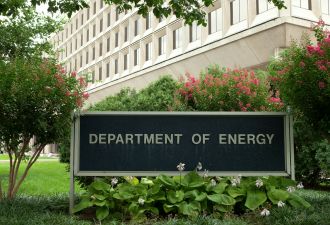Remember 2010? That was the year the Deepwater Horizon oil platform exploded, a volcanic eruption in Iceland blinded part of the world’s air traffic and, once the ash had cleared, solar took off — on an airplane.
It was also a time when U.S. venture capital firms were on the lookout for cleantech targets, drawn, not least, by the reassurance of a Department of Energy loan program that was busy dispersing $15 billion in loan guarantees.
Early that year, GTM published a list of 50 venture-capital-funded cleantech startups in areas ranging from solar to water technology “that have at least a fighting chance of succeeding.”
So where are they now? After 10 years, many of the names on the list are still familiar — and not always for good reasons.
The headstones in the cleantech graveyard
One that leaps out is Solyndra, which at the time was riding high on almost a billion dollars of venture capital and half as much again in loan guarantees.
The following year, it filed for bankruptcy in a flameout that tainted cleantech investments — and the DOE loan program — for years. And while Solyndra may have been the biggest name on our list to go bust, it was by no means the only one.
GTM's research shows no fewer than 18 companies out the 50, or 36 percent, have declared bankruptcy, ceased operations or gone quiet in a way that suggests there’s no one home.
They include the solar hopeful Nanosolar, which like Solyndra was betting on thin-film PV — a technology that barely gets a mention nowadays.
Also gone are the only two concentrated solar power companies that made the list, eSolar and SolarReserve, again reflecting a fall from grace not only for the firms themselves but also for the entire technology approach they were pursuing.
The exits that pleased investors — and those that didn’t
Then there are the businesses that have been sold, either as part of a planned exit or as a desperate attempt to save what’s left of a poor investment.
Although it’s not always easy to tell which is which, because purchase figures are rarely disclosed, the smart grid startup Silver Spring Networks clearly stands out as an exit that appears to have made sense for investors.
Silver Spring took on just over $373 million in backing, went public in 2013 and rose to hold a significant share of the North American utility smart meter networking market, before it was bought by rival Itron in 2017 for $830 million. The combined companies now compete globally with Switzerland-based Landis+Gyr, which experienced its own merger and acquisition saga over the past decade before being spun out as a publicly traded company in 2017.
Another venture capital success story is demand response specialist Cpower, which pulled in just under $28 million before selling out to Constellation Energy for $78 million. The company has since changed hands several more times, most recently landing with LS Power for an undisclosed sum.
Enphase managed to provide investors a payout with its 2012 IPO but has since taken public investors on a rollercoaster ride. The microinverter maker reached “substantial doubt about our ability to continue as a going concern” territory in 2016 as it struggled against rising competition from rival SolarEdge and other inverter makers. But it has since slashed costs, rebuilt its competitive posture and regained market share.
On the fire-sale side, meanwhile, the biggest loss is likely to have been with an electric vehicle charging company called Better Place. The business was financed to the tune of $925 million, but after failing to take off, its assets were picked up by an Israeli startup called Gnrgy for a bargain-basement $450,000.
Another company that left investors smarting was Fisker Automotive, which attracted no less than $1.5 billion in funding but ultimately sold to Wanxiang America for less than a tenth of that amount. Fisker is now seeking a comeback, promising a reverse merger via a special purpose acquisition company (SPAC) in hopes of convincing public investors that its future prospects don’t match its past performance.
Still soldiering on
Aside from these obvious failures, there are companies that are still soldiering on as privately held businesses — with varying degrees of success. Some have managed to become category leaders.
They include charging station pioneer ChargePoint, which holds a strong position in the North American EV charging market and announced its own plans in September to go public through a SPAC-enabled reverse merger.
Trilliant, a smart meter and grid networking provider, has continued to quietly land contracts around the world, most recently a deal to deliver smart grid infrastructure to Ivory Coast in West Africa.
Another familiar name in this group is the nuclear plant developer NuScale, which 10 years on is still looking at another decade before its first small modular reactor gets built.
Four other companies appear to have spent the last decade in private ownership and remain active today. Since it’s hard to put a value on these private companies, it’s difficult to assess where their venture capital investors stand in terms of recouping their investments since 2010.
But the figures for one final group in the original top 50 tell a different story.
A little EV company called Tesla Motors
There are seven companies on the list that went public and remain so today. Their total market capitalization as of early November is almost $439 billion.
This massive increase in value means the more than $35 billion of capital that went into all the companies in our top 50 list 10 years ago has grown by a multiple of 12, or 1,245 percent. And virtually all of that growth is attributable to one company.
Back in 2010, we listed Tesla Motors, which had just shipped its first thousand Roadsters, as “the little EV company that might.” For investors, it clearly has — and its market success has also given investors in residential solar installer SolarCity a welcome, if controversial, exit as well.




